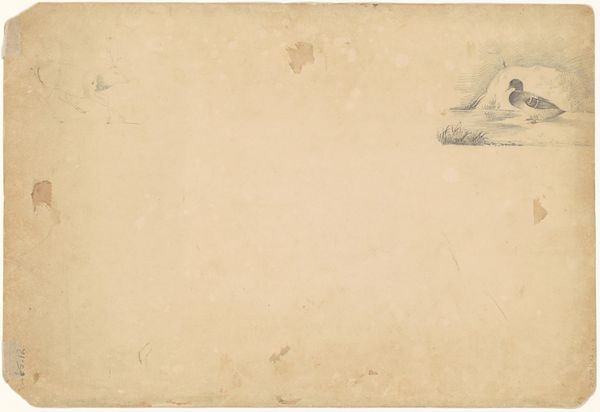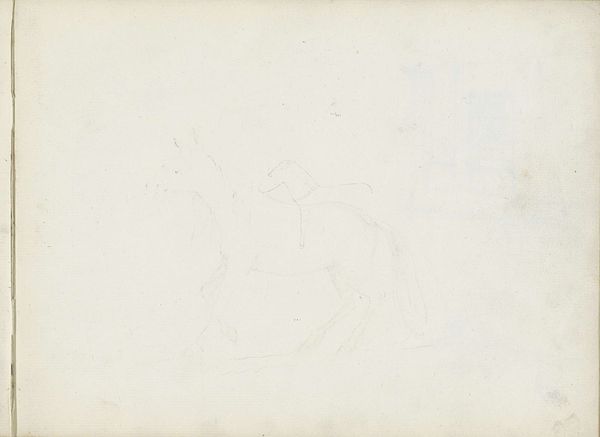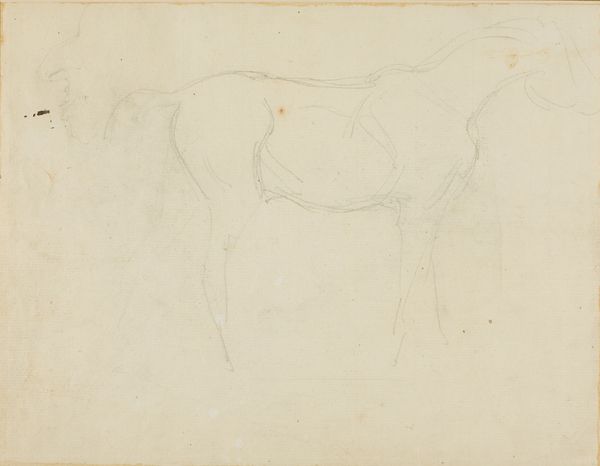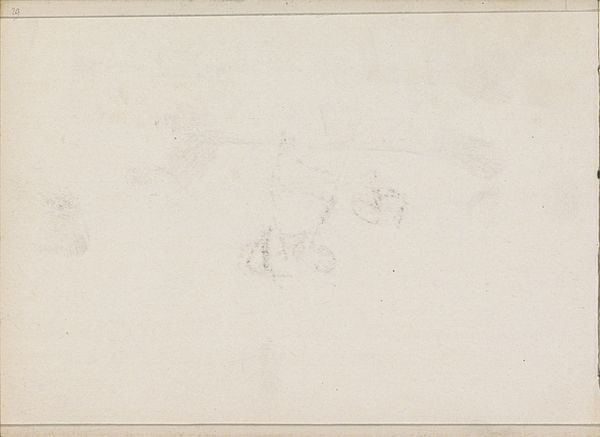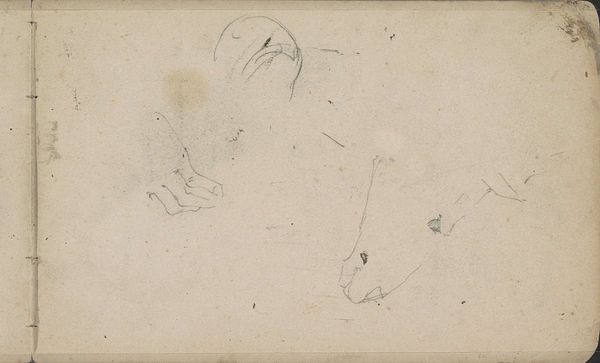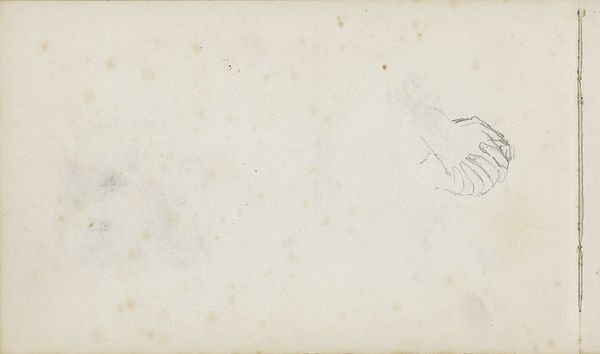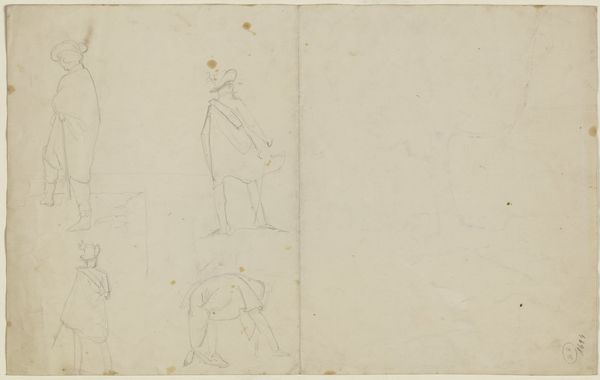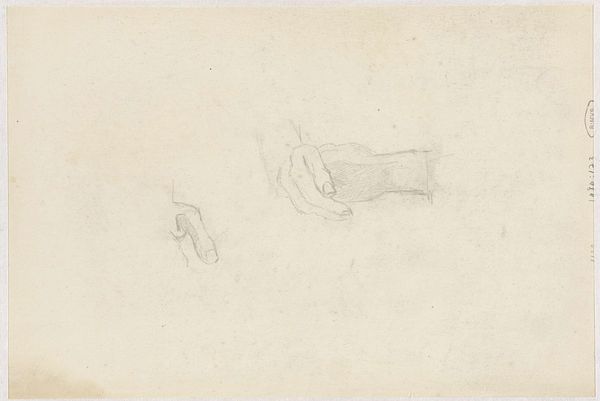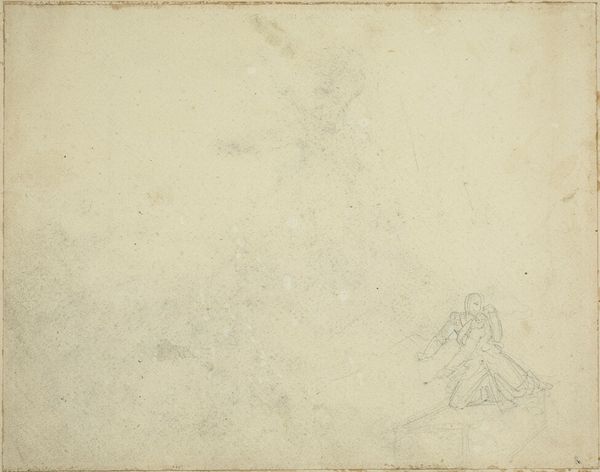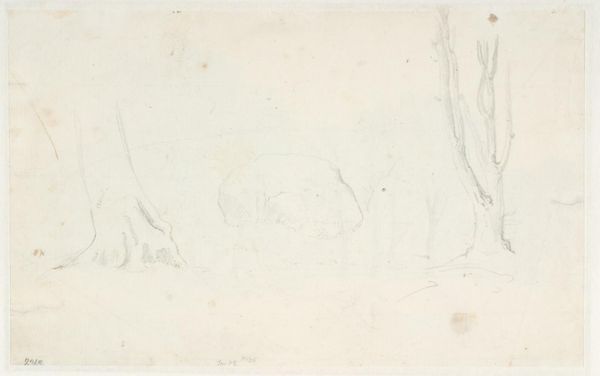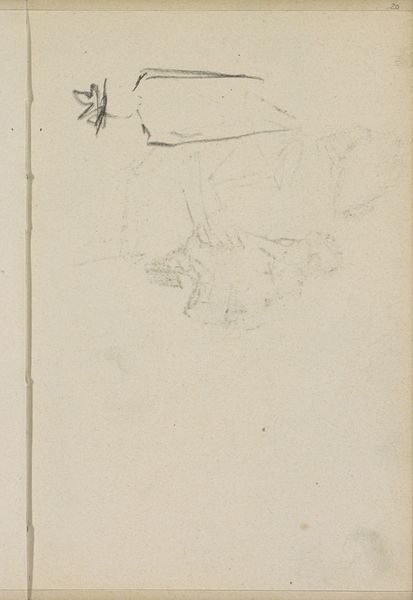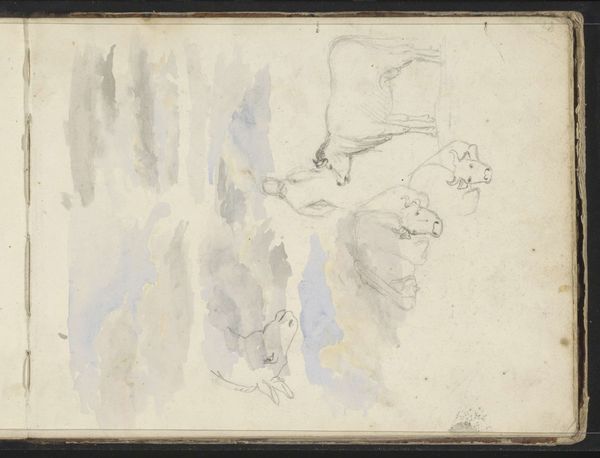
drawing, paper, ink, indian-ink, pencil, graphite
#
drawing
#
toned paper
#
light pencil work
#
16_19th-century
#
animal
#
landscape
#
figuration
#
paper
#
ink
#
german
#
indian-ink
#
pencil
#
graphite
#
realism
Copyright: Public Domain
Curator: It feels like witnessing a dream, or maybe just a thought, captured on paper. What's your read? Editor: Light as a feather. I see ghostly horses emerging from the toned paper. A landscape only hinted at... the kind of scene that fades if you stare too directly at it. There’s a stillness here, almost eerie. Curator: It's Johann Erdmann Gottlieb Prestel's "Study sheet: Horses," rendered in graphite, pencil, and ink—including what appears to be Indian ink—on paper. The work is held here at the Städel Museum, yet we're unable to pinpoint an exact date for its creation, only situating it within the late 18th to early 19th century. These 'study sheets' or sketchbooks provided artists with visual mnemonics, didn't they? Ways of committing certain figures, expressions, or compositions to memory. Editor: Exactly! They become a catalog, almost an alphabet of forms, if you will. Think of how the horse, for example, becomes imbued with so much meaning across cultures - power, freedom, grace... You know, growing up, my grandpa always had horses; seeing this work reminds me of him. There is also that sense of constant, suppressed power that this paper seems to hold back, somehow. Curator: And Prestel has employed this "light pencil work" in such a way as to further emphasize that latent energy you’re sensing, creating shadows through careful gradation to evoke depth and a sense of palpable, nervous potential, waiting to be realized. What could these figures be associated to for our visitors do you believe? Editor: Good point! I guess this sheet speaks to the preliminary moments of art-making. We only see these faint lines because they’ve become the groundwork for something more finished. Looking closely feels like peeking behind the curtain or understanding some obscure private language. The light rendering grants access, it’s intimate but feels more real. It doesn’t pretend! Curator: Absolutely! Seeing all those images overlaid, those spectral traces on paper, offers insight into Prestel's meticulous preparatory process, layering sketches until he arrived at his desired final image. It is more of a conversation with himself, that is almost a dialogue! Editor: Almost as if each of us are standing right next to him at the time! Thank you. Curator: Likewise, what a thought provoking and imaginative point of view!
Comments
No comments
Be the first to comment and join the conversation on the ultimate creative platform.
